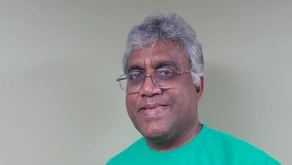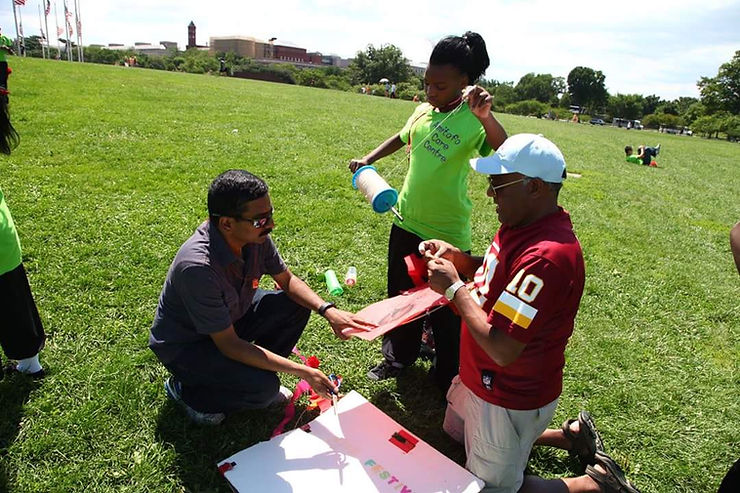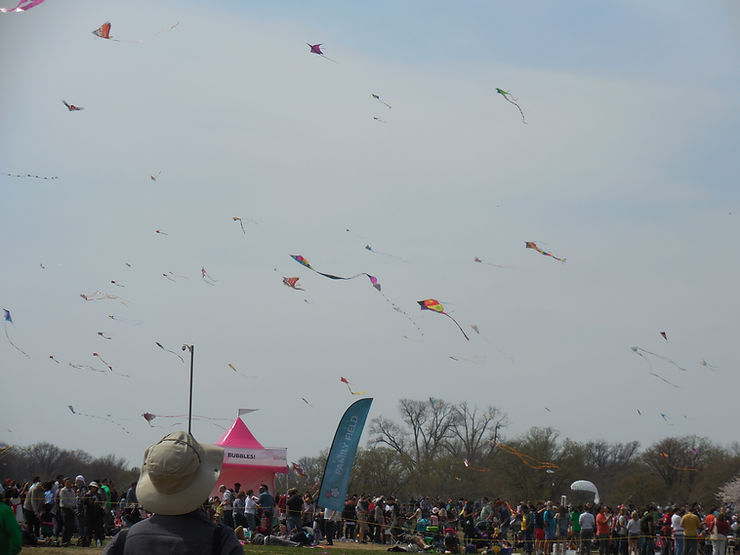
Meet Dominic. This DSFederal FDA Clarity Project Manager has been a mainstay at the prestigious National Cherry Blossom Festival, where over a million visitors gather to behold gorgeous pink explosions of flowers beneath a sapphire blue sky. Each year, on the final Saturday of March, Dominic volunteers at the festival’s kite tent. His role has evolved from kite doctor, to trainer, to serving the long lines of kite lovers overflowing from the tent, all of whom are eager to create colorful vessels of flight then release their handcrafted masterpiece to the wind. Some kites rush straight into the sky; others lurch hopelessly near the ground before collapsing into a clunky heap.
Unfortunately, this year’s event has been cancelled due to the emergence of COVID-19. Yet, despite the cloud of gloom encasing the nation, nothing can keep visions of past kite flights from dancing across his eyes. He remembers the annual glory of six months of festival preparation, resulting in the crowd-drawing kite tent that is one of the highlights of the 25-year-old Cherry Blossom Festival.
For the past five years, Dominic has volunteered at the tent, one of the most popular attractions, especially when the weather’s right. “I love the interaction with the public. When people ask how much my kite costs, I tell them $1,500. $1,499 for the flight to India. $1 for the kite.” He loves to chat up grouchy, tired three-year-olds who turn bubbly when they get to fly his kites, if only for a few enchanted minutes.

Beneath the huge tent, around forty volunteers hand out crayons, plastic, and scissors to kite makers of all shapes, sizes, ages, and ability levels. There’s also the Blossom Build-Off competition (where teams get thirty minutes to construct and fly the perfect kite), kite storytelling, as well as a designated kite cop and a kite doctor who repairs kites broken and bruised.
Dominic likes to let his kites soar close to the clouds curling around the elegant face of the Washington Monument. He says sunny days that feature bits of cap-lifting wind are perfect for lightweight kites. Heavier models call for winds of 10-20 mph. “The perfect kite is all about balance: weight, material, dowel size (the kite’s wooden spine), symmetry, and bridle length (the string between the kite and its tail). If anything is off, the kite won’t fly.”

His favorite kite? The infamous Indian Fighter, constructed of tissue paper, manja string, and bamboo. His sister-in-law sends the meticulously made kites to him from Bandra, Mumbai, but the effort is worth it. He loves to fly these paper-thin soldiers of the sky to stalk, conquer, and cut down weaker kites from battle.
Dominic began flying kites in the 80s, falling in love with the access they gave him to the sky. He taught his kids to fly kites competitively, and soon, kites became a family affair.
His kids are now grown and bored with the whole kite thing, but Dominic won’t be retiring his kite to the garage anytime soon. Even though this year’s cancellation is disappointing, he believes that “good days are ahead. It’s usually a great time but it’s a good thing to be safe. Next year will be twice as fun.”
DSFederal encourages team members to reach for the sky. Thank you, Dominic, for allowing your dreams to take flight and inspiring us with the boundlessness of your skill and generosity!


